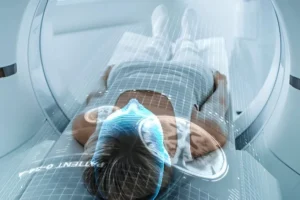Understanding the Key Differences Between Direct Primary Care and Urgent Care
- Updated on: Nov 22, 2024
- 5 min Read
- Published on Oct 1, 2023


What Is Urgent Care?
Urgent health centers provide immediate medical assistance for non-life threatening injuries and illnesses that require prompt care within hours or the same day in cases when primary physicians cannot be reached in times of urgent medical need – ideal if minor injuries don’t necessitate hospital visits. Urgent Care clinics may offer immediate solutions when primary physicians cannot be reached during medical emergencies!
Pros and Cons of Urgent Care Services
Urgent care clinics come with both advantages and drawbacks that should be carefully considered when making your selection. Below are several of these attributes of urgent care centers so you can make an informed choice before seeking urgent medical help from one.
Pros:
- Gain healthcare without waiting weeks or days – right when it is needed.
- Emergency rooms tend to be both less costly and less congested than hospital emergency departments.
- Some clinics accept insurance; however, copay amounts may differ depending on which facility accepts your plan.
- These locations allow patients easy access to physicians who reside far away.
Cons:
- In this system, you cannot select your doctor.
- Urgent care clinic physicians don’t usually have time or access to patient records and histories in order to form lasting relationships with them, leaving many without accessing all their pertinent records and accounts.
- Urgent health visits often incur substantial copay fees that add additional expenses, thereby driving up costs significantly for an urgent visit.
- When seeking medical assistance on an ongoing basis, it may not always be possible to visit the same physician each time.
Be mindful that urgent care may provide convenient healthcare but is limited in comparison with primary consideration when it comes to offering in-depth and specialized treatments.
What Is Direct Primary Care (DPC)?
Direct Primary Care (DPC) is an alternative healthcare program intended to make accessing treatment more accessible and cheaper for its customers. Instead of paying multiple providers separately for preventative medicine and doctor visits for illness/minor injury treatment, customers spend one monthly fee that covers most services required – Direct Primary Care also emphasizes doctor-patient solid relationships that allow doctors to give personalized, tailored attention based on what is most suitable to the customer’s circumstances and treatment.
Pros and Cons of Direct Primary Care Services.
Direct primary care offers many advantages that make it an appealing option for many individuals and families; here are the pros and cons of selecting direct primary care services as an option.
Pros:
- Every doctor and nurse can access your medical history quickly, making it more straightforward for them to provide swift assistance for unexpected accidents or illnesses.
- Urgent issues require prompt resolution with minimum downtime; next-day and same-day availability services thus provide solutions that fulfill these criteria.
- Internet services for providers can be accessed any time of day or night, even if an appointment cannot be set immediately in person.
- Direct primary care specializes in treating chronic illnesses while offering preventative measures and responding to urgent health needs, providing comprehensive solutions that encompass every aspect of health.
- Prepayment helps avoid unexpected charges or copays.
Cons:
- Primary care directors require membership for their services to be accessible.
- Emergency room visits may not be covered; however, your primary care doctor can facilitate accessing an ER on your behalf.
It is essential to keep in mind that while direct primary care offers many advantages, it should never serve as a replacement for emergency medical assistance, which should usually be covered under traditional health plans. Contact Craft Concierge to seek more guidance.
What are the primary differences between Direct Primary Care and Urgent Care models?
Both primary care direct and urgent care play vital roles within healthcare delivery systems; however, there are distinct distinctions that need to be recognized between them.
Definition and Objectives: Urgent care facilities provide immediate medical assistance for minor injuries or illnesses when your primary healthcare provider isn’t readily available. At the same time, direct primary treatment involves long-term comprehensive healthcare management with regular check-ups to treat chronic conditions effectively.
Scopes: Urgent Care Clinics specialize in acute medical concerns such as minor injuries and illnesses, flu symptoms, and minor cuts requiring diagnostic services like X-rays and laboratory tests on-site for diagnosis purposes. Furthermore, direct primary care addresses various health needs like vaccinations for flu vaccination programs, as well as managing chronic illnesses like depression or cardiovascular problems as part of preventative healthcare solutions and providing psychosocial support as part of delivering preventative healthcare solutions.
Access and Appointments: Urgent care centers place great value in being flexible and available, often operating outside regular business hours, such as nights and weekends, to provide walk-in appointments that offer immediate medical treatment or respond quickly to emergencies that require urgent assistance. Direct primary care clinics strive to create solid doctor-patient relationships by scheduling same-day or next-day appointments without long wait times for patient visits.
Cost Structure: Urgent care clinics typically accept insurance with variable copay amounts that tend to be cheaper than hospital emergency room visits; direct primary care requires paying an annual membership subscription fee in return for all its services, which could potentially include unexpected charges or copays that might come up;
As part of making decisions regarding primary or urgent treatment services, your personal needs should always come first.
Which Option Suits Your Needs Best?
Considerations when making decisions between direct primary care or urgent care depend upon individual health needs and preferences, with some key things you should keep in mind when making this critical choice:
Urgent Care Needs: If you require immediate treatment for an injury or illness and cannot wait, urgent care may be the right solution.
Personalized and Comprehensive Care: For long-term doctor-patient relationships and comprehensive wellness maintenance care that prioritizes prevention, direct primary care may be the perfect fit.
Price Considerations: Urgent care may be beneficial if you require immediate treatments that require paying as you go; otherwise, direct primary care offers more affordable monthly fees without surprises.
Access and Convenience: Urgent care clinics often offer extended hours and walk-in appointments that make healthcare access easy on weekends and evenings; direct primary care clinics typically provide same-day/following-day appointments with no wait time for care.
At all costs, individuals should recognize that primary or urgent care cannot substitute emergency assistance in an acute medical crisis. When seeking urgent help, it must be found immediately in an institution explicitly designated to provide that service.
Understanding the differences between urgent care and primary care will enable you to make more informed healthcare choices. Urgent care offers fast access for minor injuries or illnesses that don’t necessitate emergency treatment; primary care provides personalized attention through membership arrangements. When choosing between these alternatives, personal factors, including medical needs, preferences, financial constraints, and preferences, must be kept in mind, but don’t mistake either of them as replacements for emergency treatments, which should always be sought when required – doing this ensures you receive precisely the care needed by this decision making.












